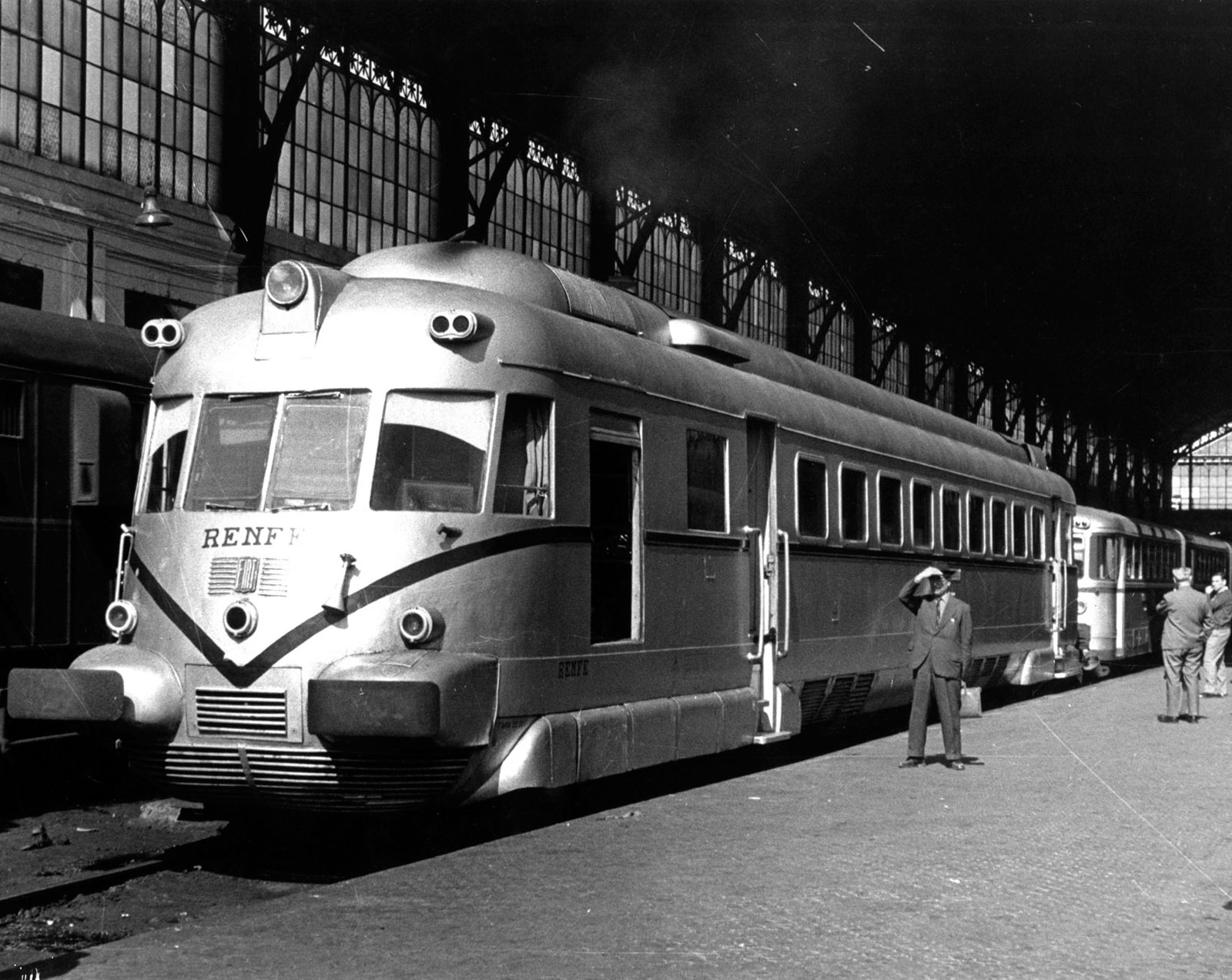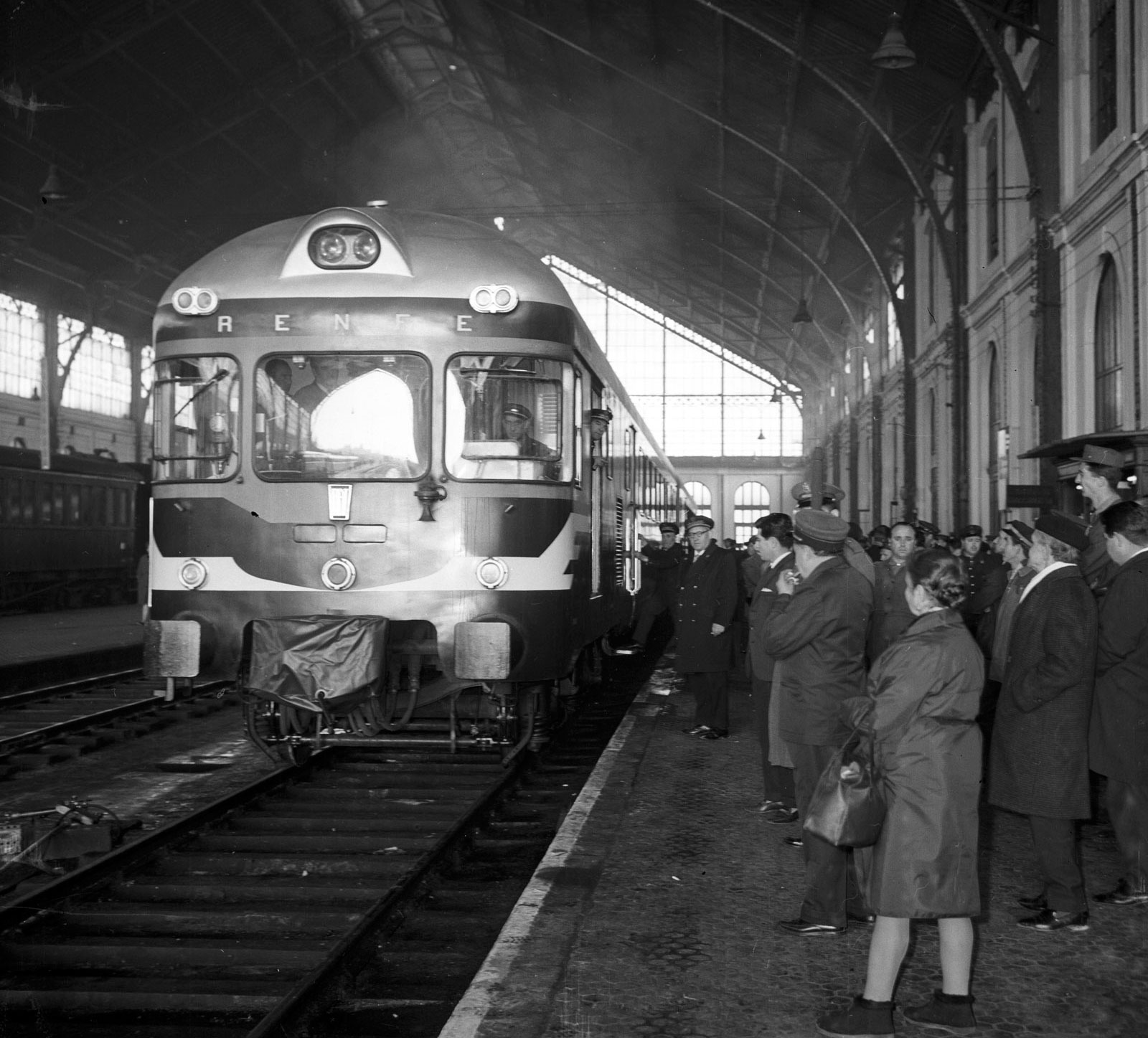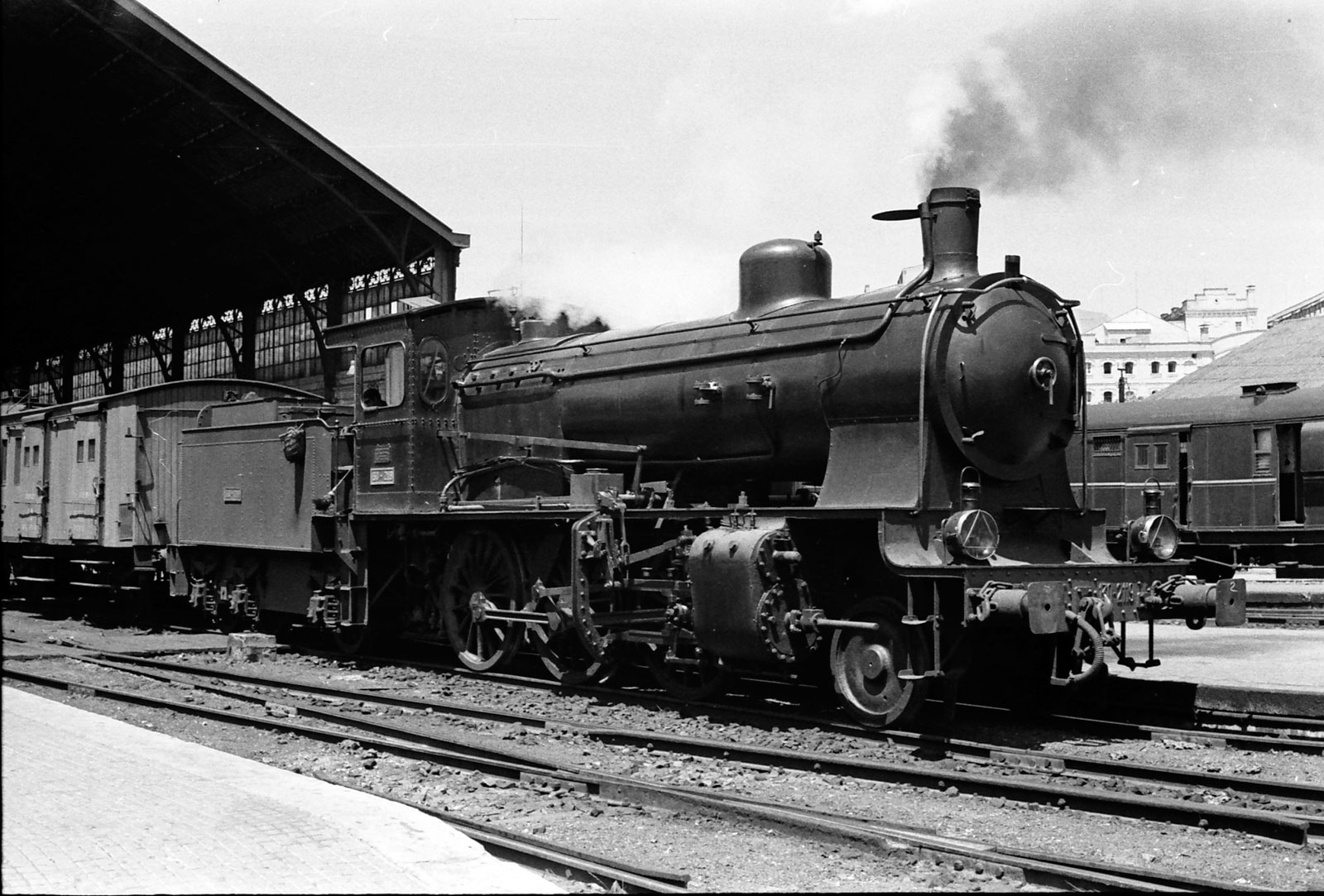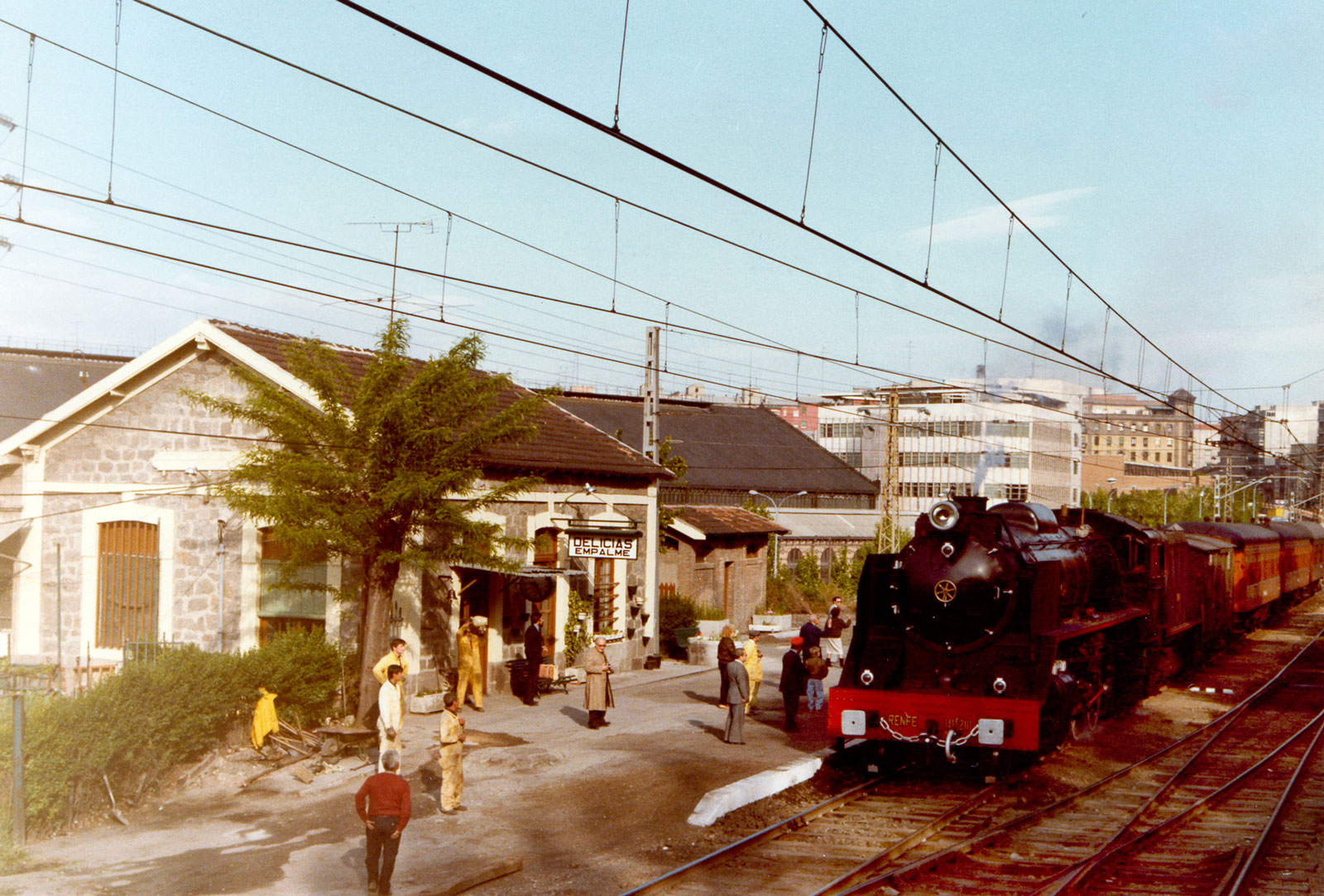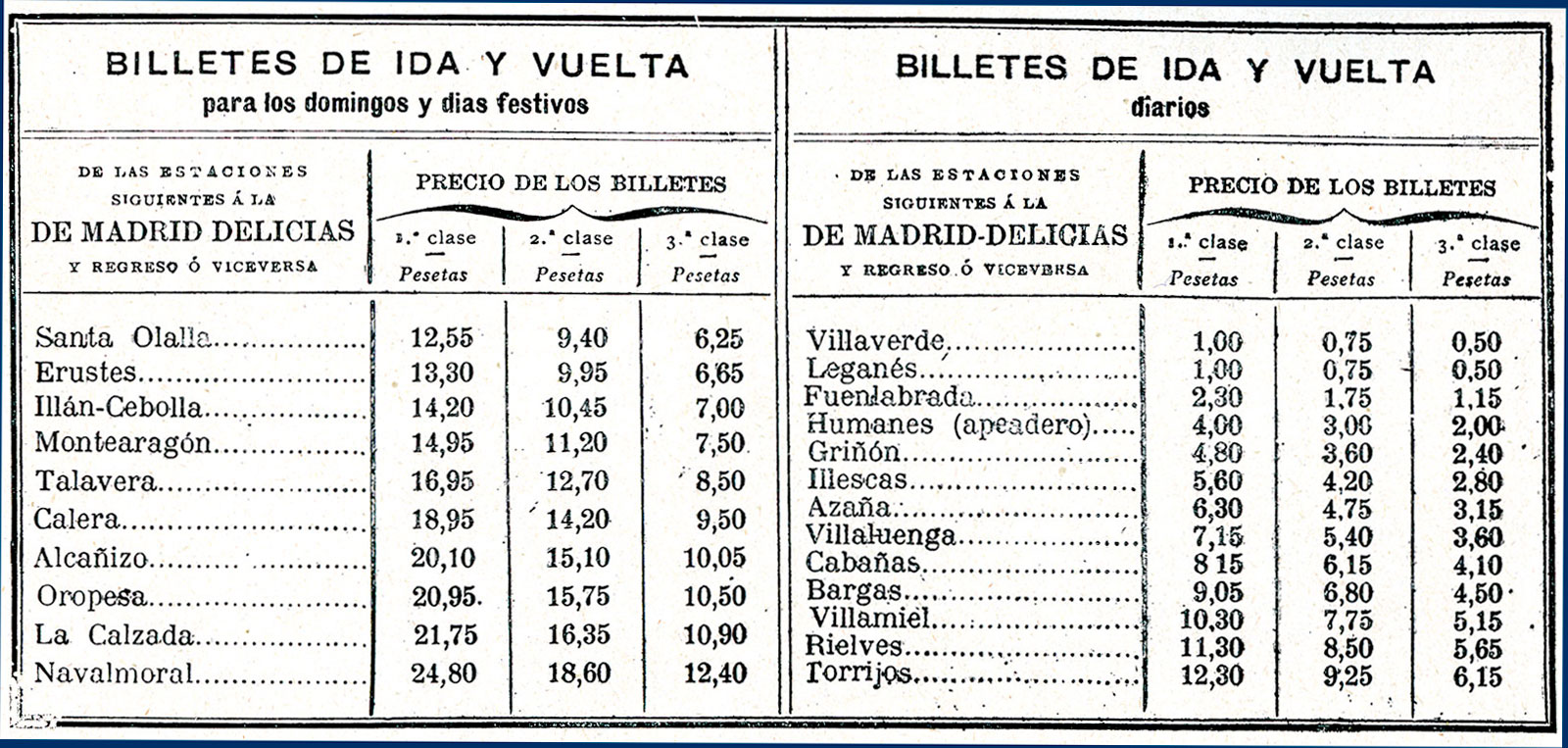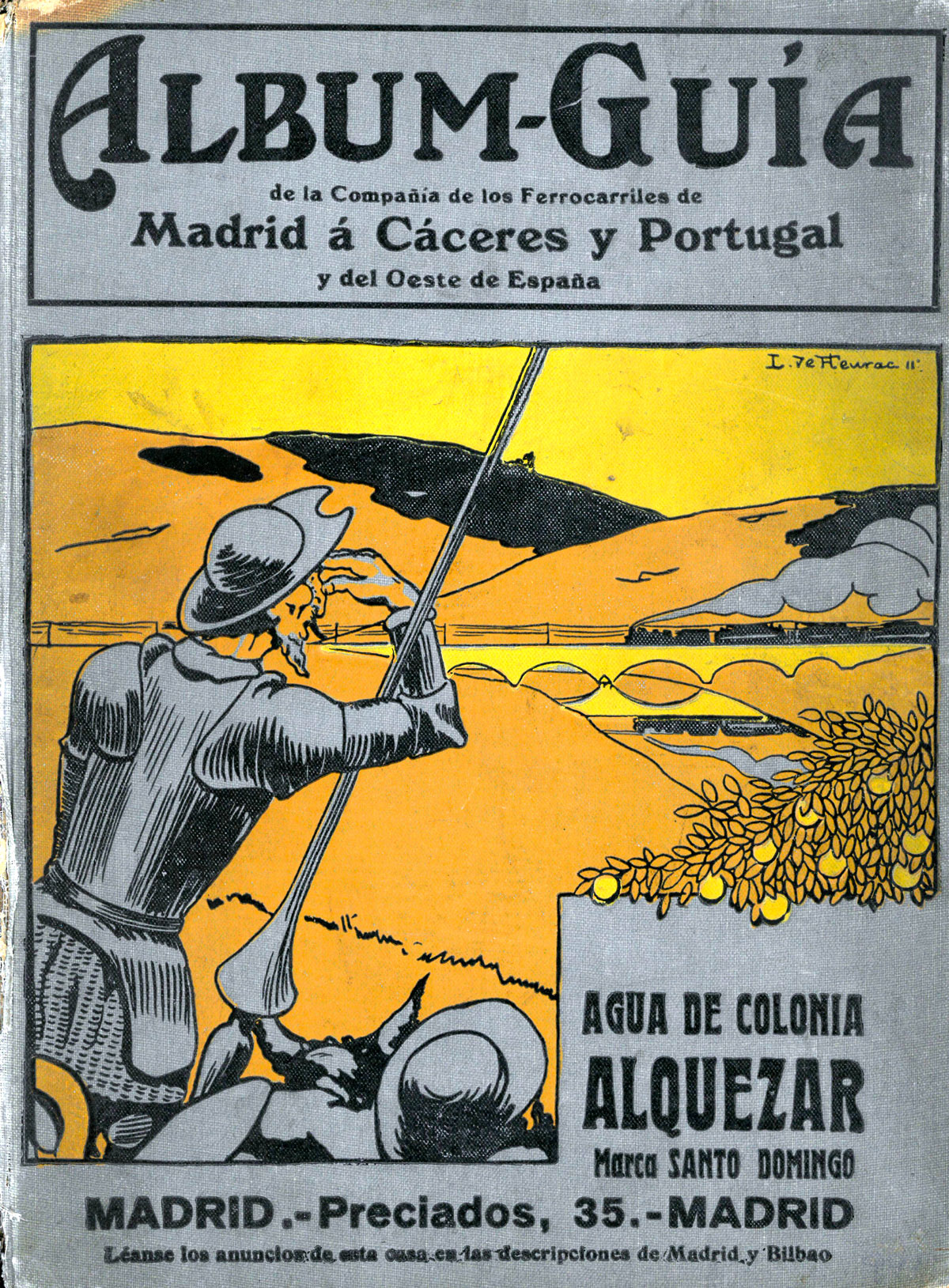The gateway to the west
xtremadura and Portugal were the typical destinations of the
trains departing from Delicias Station. Lisbon was the
destination of the most prestigious trains, such as the first
express that operated on alternate days and took more than 21 hours to
complete the journey. Starting in 1887, these platforms also
welcomed the prestigious Surexpreso, an international convoy
that, once a week, stopped in Delicias before heading towards
Príncipe Pío and then continuing on to Paris and London, with
its deluxe sleeping cars. In the 1930s, that express train was
supplemented with a modest mail one that took five hours longer.
At the same time, the mail, mixed or freight services travelled
to Talavera o Plasencia-Empalme, where they joined other “Ruta
de la Plata” convoys heading towards Cáceres, Mérida and
Andalusia in the south; or towards Salamanca, Zamora and Astorga
in the north.
After the standstill caused by the Spanish Civil War, whose
frontline blocked the way out of Delicias at Villaverde, the
establishment of RENFE in 1941 brought about changes. New
commuter services appeared connecting Griñón, Villaluenga or
Villaverde, along with two daily services to Lisbon: the deluxe
one (2 pm) and the mail one (7 pm). Delicias also received
trains connecting with Badajoz: two expresses (a day train and a
night train), which took twelve and fourteen hours,
respectively; and a mixed freight train whose journey from
origin to destination lasted twenty-four hours.
In the 1950s and 1960s, new commuter services appeared
connecting Toledo, via Algodor, as well as trains to Cordoba,
via Almorchón. A great leap forward was made in 1967 with the
start of the Lisboa-Expreso TER service, which took just nine
hours to reach Lisbon and, along with the Lusitania Expreso
night train, in operation since 1943, were the last great
passenger trains.
Delicias also had its commercial side, with bays that unloaded
and loaded all types of trains, especially those heading to the
Cattle Slaughterhouse or the Hierro Street coal branch line.
The last train that departed from Delicias was the Badajoz
express on the night of June 30, 1969. In 1970, RENFE authorised
Delicias’ conversion into a freight station, with the last
personnel leaving in 1971. However, it maintained its use for
freight up until the early 1980s.

